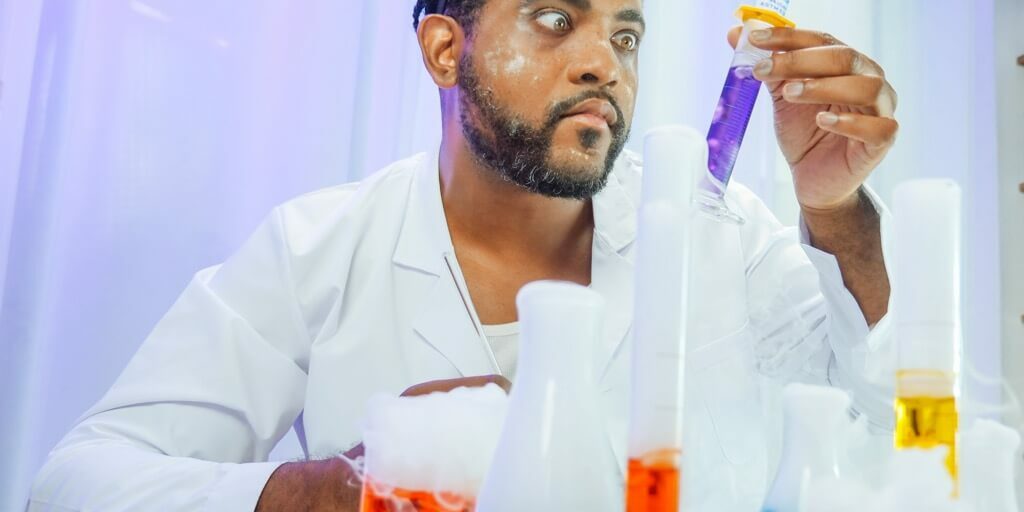If you’ve ever gulped down a daily multivitamin and indulged in a plate of asparagus, you might have witnessed a shocking transformation in your urine hue, teetering on the edge of a neon yellow alarm.
Enter vitamin B2, the renowned riboflavin, a staple in nearly every multivitamin concoction. The yellow-green tint first caught the scientific eye back in 1872, when Alexander Wynter Blyth stumbled upon this peculiar phenomenon in milk.
Fast forward to 1879, with the discovery of lactochrome and lactoflavin, leading to the eventual identification of riboflavin in the 1930s. The term “flavin,” derived from the Latin word “flavus” meaning yellow or blonde, encapsulates the essence of this color-releasing chemical.
But why does riboflavin sport that sunny yellow hue? It all boils down to the peculiar way substances interact with light, unveiling their true colors to our eyes.
Luminance, a form of electromagnetic radiation, dances in waves categorized by their length. While ultraviolet and x-rays boast shorter wavelengths, microwaves and radio waves linger on the longer end. The visible light spectrum spans a tiny range of 400 to 700 nanometers, the very wavelengths dictating colors.
Colors emerge when objects absorb specific segments of the light spectrum. Riboflavin’s love for absorbing light in the 400-500nm range (the blues) gifts it a delightful yellowish shade, though this wavelength surpasses human visual perception.
And why, pray tell, does this tint manifest in your urine? The answer hides within the body’s natural disposal mechanism.
Studies unveil that about half the surplus riboflavin exits the body through urine. With recommended adult doses ranging between 1 and 1.6 mg, some multivitamins push the limits, offering doses scaling up to 100 mg, potentially paving the way for an artistically tinted bathroom visit.
The Impact of Vitamin Intake on Urine Color
When your urine takes on a bright, almost neon-yellow color, it often raises concerns about vitamin intake. The primary culprit? Vitamin B2, or riboflavin, is commonly found in most multivitamins. This neon tint in your urine merely signals that your body is receiving more than it requires, causing the excess to mix with your urine.
Questions often arise about the health implications of such vivid urine hues. Contrary to alarm, a bright yellow tint in your urine generally isn’t a cause for worry. In most cases, it indicates a potential lack of hydration rather than a severe health issue. Factors like your diet, medications, or the specific vitamins you consume can influence the color of your urine.
While bright yellow urine might seem harmless, excessive vitamin B intake can lead to potential health complications. High doses of Vitamin B can trigger complications affecting various bodily systems, including the heart, blood, skin, gastrointestinal tract, nerves, and cells. Although rare, symptoms of vitamin B overdose can pose serious risks and, in extreme cases, become life-threatening.
Typically, healthy urine presents as pale yellow to amber in color, appearing clear. Darker urine often signifies dehydration, urging the need for increased water intake. Monitoring your urine color can serve as a simple indicator of your hydration levels. If your urine appears darker than usual without other symptoms, increasing water intake can help normalize its color.
Darker brown urine or foaming/fizzing urine could signal potential kidney issues. In kidney failure, urine may turn dark brown due to the accumulation of waste products. Foaming or fizzing urine might indicate increased protein levels or kidney disease, warranting further medical attention and evaluation.
Interestingly, water-soluble vitamins like C, B, and folic acid don’t accumulate in the body. Excess amounts are excreted through urine, maintaining healthy levels. The body’s limited absorption capacity ensures that any surplus vitamins not utilized are naturally eliminated, contributing to the vivid coloration of urine.
Tips If Your Concerned
Hydration is Key
Ensure you maintain adequate hydration levels throughout the day. Drinking enough water helps dilute the concentration of vitamins and their metabolites in your urine, potentially reducing the intensity of the yellow color. Aim for at least eight glasses of water daily to promote proper hydration and assist in regulating urine color.
Balanced Vitamin Intake
Consider adjusting your vitamin dosage if you consistently notice a bright yellow hue in your urine. Lowering the dosage of certain vitamins, especially those rich in riboflavin (Vitamin B2), might help reduce the intensity of the coloration while still meeting your nutritional needs. Consult a healthcare professional before modifying your supplement intake.
Timing Your Vitamin Intake
Try spreading out your vitamin intake throughout the day. Instead of taking all your vitamins at once, consider dividing the dosage into smaller portions and consuming them at different times. This approach might aid in better absorption and utilization of the vitamins, potentially minimizing excess elimination through urine.
Consider Your Diet
Evaluate your dietary choices in conjunction with your vitamin intake. Certain foods naturally contain high levels of riboflavin, contributing to the vivid urine color. Foods like almonds, dairy products, and leafy greens are rich in riboflavin. Adjusting your diet alongside your vitamin intake could help manage urine color changes.
Consult a Healthcare Professional
If you’re concerned about the brightness of your urine or suspect that your vitamin intake is excessively impacting its color, seek advice from a healthcare professional. They can assess your overall health, review your vitamin regimen, and offer personalized guidance to address any concerns about urine coloration related to vitamin consumption.
Genetic Variations in Riboflavin Metabolism
The debate surrounding genetic variations in riboflavin metabolism delves into whether individual genetic makeup impacts how riboflavin is processed in the body, subsequently affecting urine coloration. Proponents argue that genetic diversity could indeed play a significant role, pointing to studies suggesting differences in riboflavin absorption and excretion rates among individuals with distinct genetic traits. However, opponents contend that while genetics might influence certain aspects of nutrient metabolism, the visible impact on urine color due to riboflavin intake is likely uniform across most individuals.
Riboflavin Dosage and Urine Color Intensity
This debate centers on whether the dosage of riboflavin intake directly correlates with the intensity of urine coloration. Advocates propose that higher riboflavin doses lead to a more vivid yellow hue in urine, citing anecdotal evidence and studies showcasing a dose-response relationship. Contrarily, dissenters argue that there might be a threshold beyond which riboflavin dosage doesn’t significantly impact urine color, emphasizing that other factors, such as hydration levels or individual metabolism, could exert more influence.
Impact of Other Vitamin Combinations
The discourse here revolves around the potential impact of combining various vitamins in a supplement on urine coloration. Proponents suggest that specific combinations might amplify urine color changes, presenting scenarios where certain vitamin interactions lead to more intense urine hues. However, opponents counter by highlighting research indicating minimal variations in urine color among those taking combined versus individual vitamins, asserting that interactions have negligible effects on coloration.
Gender Variances in Urine Color Response
The discussion on gender differences in urine color response examines whether biological or hormonal distinctions between males and females influence the intensity or perception of urine color changes due to vitamin consumption. Advocates suggest that hormonal variations might affect how vitamins are metabolized, potentially leading to differing urine colorations. Nevertheless, dissenters argue that while there might be slight variations, gender-based differences in urine color response to vitamins are negligible and not clinically significant.
Environmental Factors and Urine Color
This debate considers whether external conditions like temperature, humidity, or altitude impact the intensity of urine coloration despite consistent vitamin intake. Proponents propose that environmental factors could influence urine color, citing instances where external conditions altered the intensity of urine hues. However, opponents contend that while environmental factors might affect hydration levels, they play a minor role in the visible color changes associated with vitamin intake, asserting that urine coloration remains primarily influenced by vitamin metabolism.
The result? A visually pleasing, albeit anxiety-inducing, hue in your urine that might have you doubting your health. It’s a sentiment echoed by a physician friend who quipped, “Americans boast the most expensive urine globally,” hinting at the extravagance of vitamin consumption and the artful outcome.

Have you ever wondered why your freshly cut apples turn that unappetizing shade of brown?…

Migraines, intriguingly complex and often misunderstood, are a type of primary headache, distinct in their…

Contrary to common belief, almonds are not true nuts. They are seeds from the fruit…







